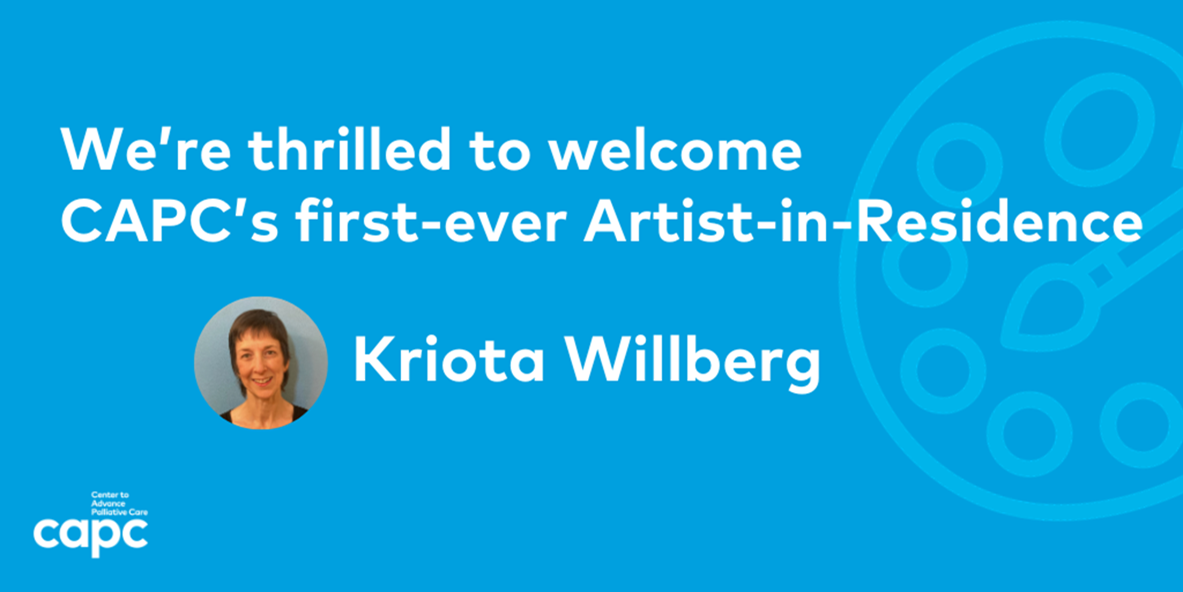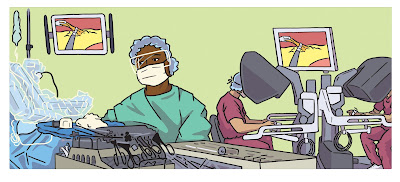THESE ARE GRAPHIC MEDICINE TIMES
 |
| Kriota Willberg |
Right now, almost every aspect of our lives has been impacted by two major cultural/medical phenomena: pandemic and violence. COVID-19 and the murder of George Floyd is shaping our values, our behaviors, and our body/mind/spirits.
This implies that practically any comics that you make these days could qualify as graphic medicine: comics about everything and anything to do with health, medicine, illness and our bodies.
Whether your interest is in protecting people from COVID-19, fighting racism, or just blowing off some tension by making gag cartoons about herpes, creating graphic medicine presents a range of challenges like - making arguments that will inspire people to make healthier choices; communicating intense subjective states like pain, grief, or fear; using humor to explore sensitive subjects; educating readers without being boring; or mastering techniques for drawing the perfect word balloon.
Are you making comics about graphic medicine? Looking for answers to tricky comics problems? Want to share your skills and knowledge? Have nothing to do on Tuesday evenings?
JOIN THE GRAPHIC MEDICINE CONFAB! - IT'S FREE!!
 |
| Joel Christian Gill |
The Graphic Medicine Confab is a roundtable conversation focusing on the challenges and techniques of making graphic medicine: comics about everything and anything to do with health, medicine, illness and our bodies.
There's no charge.
Each meeting has a theme and a facilitator.
The GMC will meet four times this summer via Zoom, Tuesday evenings from 7-7:45 PM (ET).
June 16, Kriota Willberg – How can we make dangerous information less threatening?
June 30, Joel Christian Gill – Emotion and style in comics
July 14, Georgia Webber – Collaborating across access needs
July 28, Ben Schwartz – Humor, Comics, and Medicine
Join us to contribute ideas, ask questions, get feedback, and share resources.
Fill out this Google Form and we will send you the Zoom invite to each meet.
WHO ARE WE?
 |
| Georgia Webber |
Joel Christian Gill™ is the chairman, CEO, president, director of development, majority and minority stock holder, manager, co-manager, regional manager, assistant to the regional manager, receptionist, senior black correspondent and janitor of Strange Fruit Comics. He is the author/illustrator of 2 books from Fulcrum Publishing Strange Fruit vol I Uncelebrated Narratives from Black History May 2014 and Tales of the Talented Tenth Fall 2014. In his spare time he is the Chair of Foundations at the New Hampshire Institute of Art and member of The Boston Comics Roundtable. He received his MFA from Boston University and a BA from Roanoke College. His latest work is a memoir chronicling how children deal with abuse and trauma: Fights: One Boy's Triumph Over Violence (Oni Press January 2020.)
Georgia Webber is a comics artist, writer, and editor entirely occupied by the intersection of health and art, making music, comics, and facilitating health workshops. Georgia is best known for her debut graphic memoir, Dumb: Living Without a Voice (Fantagraphics 2018), the chronicle of her severe vocal injury and sustained vocal condition which causes her pain from using her voice. This difficult experience lead her to work as a Cranial Sacral Therapist, a meditation facilitator, and as an improvising musician. She has extended her love of the voice into the community with a project called MAW Vocal Arts. MAW hosts a vocal arts showcase event and online practice sessions called Breathing. Georgia’s latest book is a collaboration with Vivian Chong, Dancing After TEN (Fantagraphics 2020).
 |
| Ben Schwartz |
Ben Schwartz, MD is a staff cartoonist for the New Yorker and an assistant professor of medicine (in surgery) at Columbia University’s Vagelos College of Physicians and Surgeons. After graduating from medical school at Columbia University and completing an internship in internal medicine, Schwartz decided to take the leap to becoming a full-time cartoonist. Though he no longer practices as a doctor, Schwartz has taken on multiple roles at Columbia, where he teaches comic storytelling in the school’s Narrative Medicine program, serves as Chief Creative Officer for the Department of Surgery, and provides communication strategy to various groups throughout the medical center.
Kriota Willberg makes comics about the body sciences, medical history, and bioethics. Her book, Draw Stronger: Self-Care for Cartoonists and Visual Artists, is published by Uncivilized Books. Other comics have appeared in: 4PANEL.ca,Spiral Bound (Medium.com), SubCultures, Comics For Choice, The Graphic Canon, Intima: Journal of Narrative Medicine, and Strumpet 5, among others. Willberg writes a self-care column for the Comics Beat called Get A Grip!. Her comic Silver Wire was nominated for a 2019 Ignatz Award. She teaches graphic medicine and drawing in the Department of Humanistic Medicine at NYU.
Hope to see you soon!



































